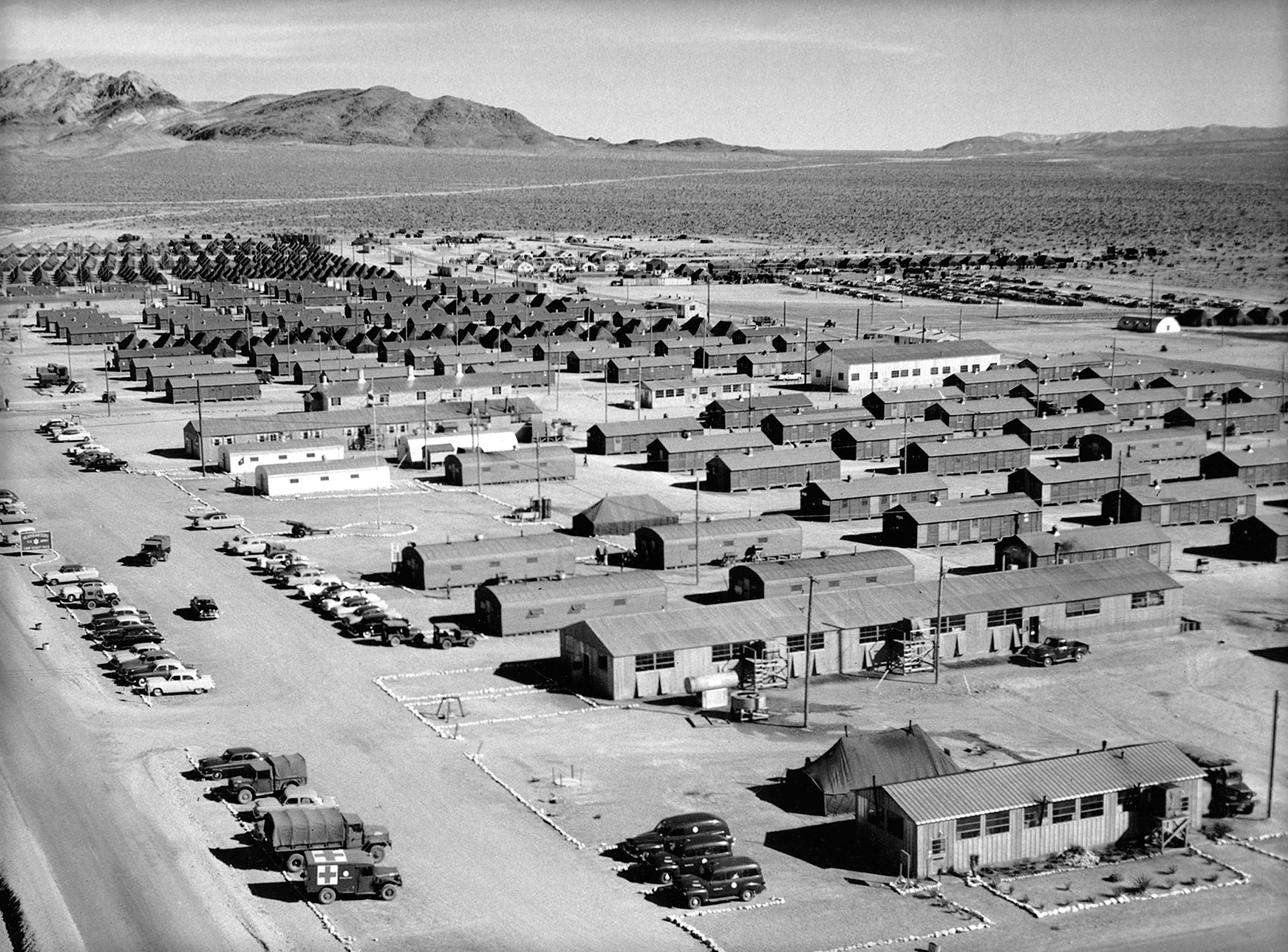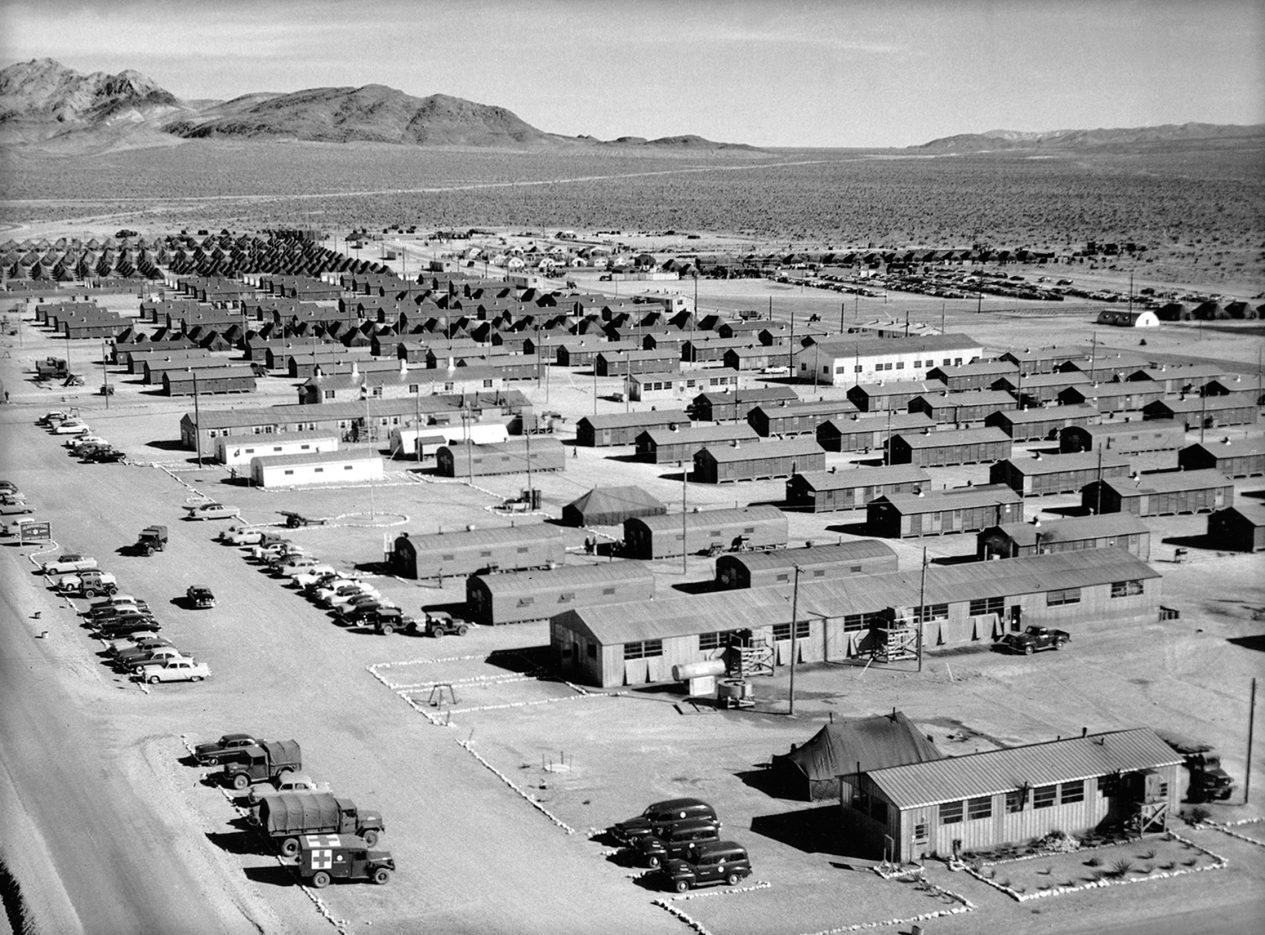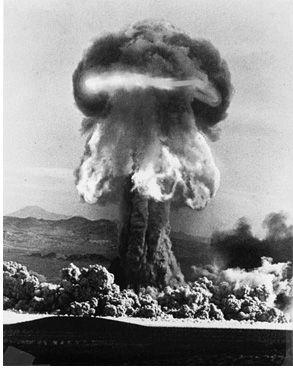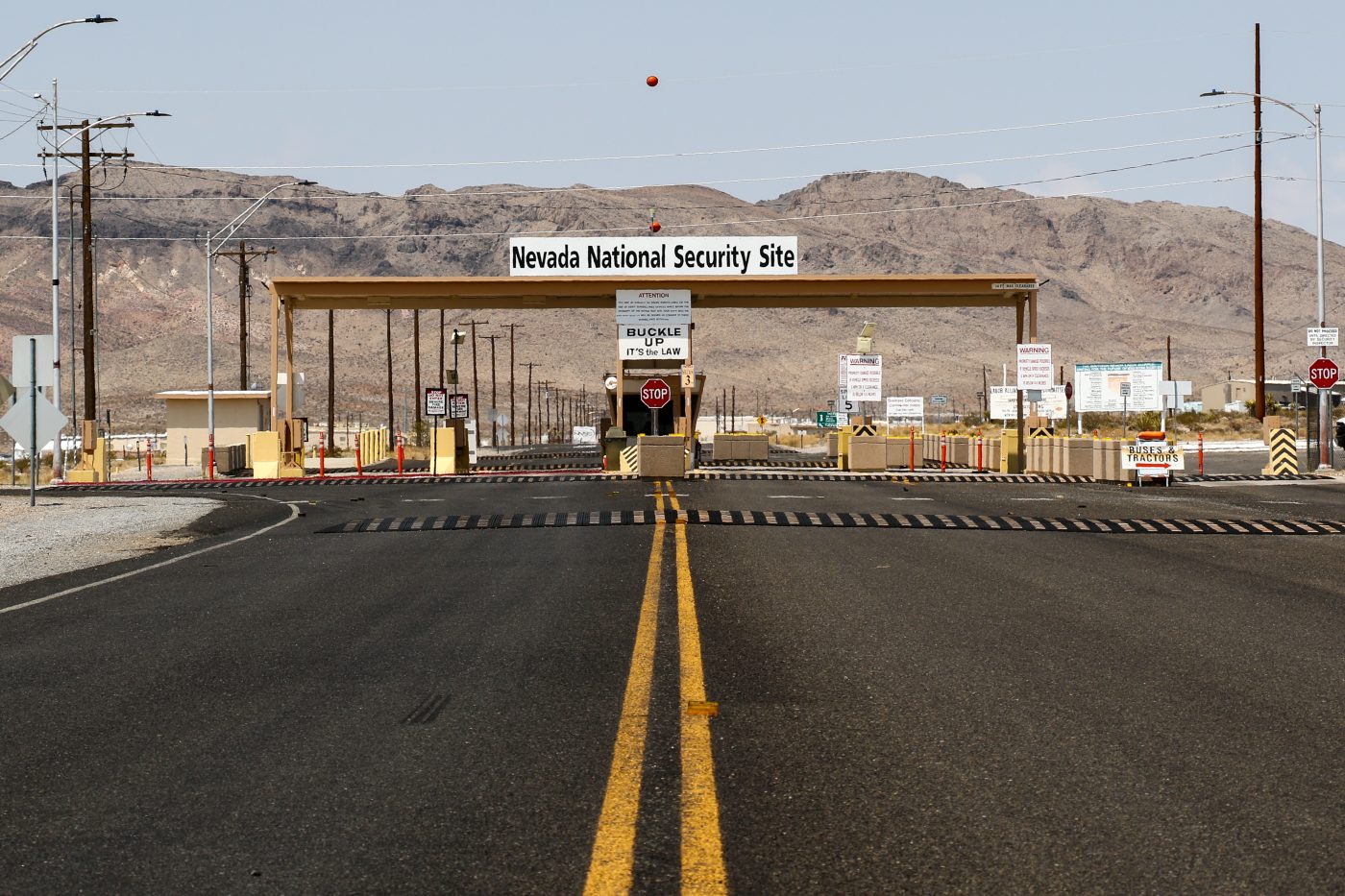
Our History

A Proud Past
In the Beginning
Following the development and use of the atomic bomb in 1945, the United States Government created the Atomic Energy Commission (AEC) in 1947 as the agency for controlling nuclear materials and developing nuclear weapons. After the first nuclear test at the Trinity Site in New Mexico, the U.S. moved its nuclear weapons experimentation program to the Pacific. Security and logistical issues quickly illustrated the need for a continental test site. After consideration of many possible sites, an AEC meeting on December 12, 1950, concluded that the Las Vegas Bombing and Gunnery Range in Nevada satisfied nearly all of the established criteria for a continental proving ground. As a result, President Harry Truman authorized a 680-square mile section of the Nellis Air Force Gunnery and Bombing Range in Southern Nevada as the Nevada Proving Grounds on December 18, 1950. In 1955, the name was changed to the Nevada Test Site (NTS).

On January 19, 1975, the AEC was abolished and replaced with two agencies: the Energy Research and Development Administration (ERDA) and the Nuclear Regulatory Commission (NRC). ERDA was given the mission of administering the nuclear weapons program and carrying out energy research and development programs, including operation of the NTS. The NRC’s mission was, and still is, to regulate use of civilian nuclear materials and license nuclear power plants.
In October, 1977, the Department of Energy was created to take over ERDA’s functions as well as energy functions from other federal agencies. Stronger emphasis was placed on energy conservation and alternative energy sources, such as solar, geothermal, and wind power.
Atmospheric and Underground Testing
On January 27, 1951, the first atmospheric nuclear test was detonated at the NTS, code-named “Able.” A total of 100 atmospheric tests were conducted at the NTS until July 1962. All atmospheric testing was banned on August 5, 1963, when the Limited Test Ban Treaty was signed in Moscow, giving birth to the age of underground testing. The United States conducted 828 underground tests at the NTS. The last underground test, “Divider,” was conducted on September 23, 1992.

The End of Nuclear Testing and the Start of Subcritical Experiments
After conducting 928 nuclear tests, full-scale nuclear testing came to an end in 1992 when the United States entered into a unilateral moratorium on nuclear weapons testing announced by President George H.W. Bush. Following several extensions of the moratorium, the Comprehensive Nuclear Test Ban Treaty was signed by President Bill Clinton in 1996. In order for the United States to maintain the safety and reliability of its nuclear stockpile without conducting full-scale tests, subcritical experiments were initiated at the NTS. An experiment is considered subcritical if no critical mass is formed and no self-sustaining nuclear reaction occurs. Subcritical experiments occur more than 900 feet below ground at the Principal Underground Laboratory for Subcritical Experimentation (PULSE).
From NTS to NNSS
In 2010, the Site name was changed to NNSS to more accurately reflect its evolving mission. Although the storied Nevada Test Site had a long history of supporting national security through full-scale atmospheric and underground nuclear testing, the last test occurred in 1992 following the nuclear weapons testing moratorium and subsequent test ban treaty. Since that time, the nuclear weapons mission at the Site has evolved to include subcritical experiments and other Stockpile Stewardship programs designed to ensure the nation’s remaining nuclear weapons remain safe, secure, and effective without full-scale nuclear testing. In addition, the emergence of global and homeland security threats has resulted in a further shift in the NNSS’ mission toward planning, experimentation and training to prevent and counter those threats. Today, these activities comprise more than 50 percent of the NNSS’ mission, providing ample justification for the name change.

Nuclear Testing Archive
The Nuclear Testing Archive (NTA) collects and consolidates historical documents, records, and data for long-term preservation. The collection includes documentation on the detection and measurement of radioactive fallout and the related factors resulting from nuclear test device activities at the Site, the Trinity event, the Pacific Proving Grounds, and other on-continent test locations, as well as information on the health effects of radiation and various related scientific and technical studies and reports.
For more information and to access the NTA content through OpenNet, the Department of Energy’s bibliographic database containing declassified and publicly available documents, visit the NTA page.
The Atomic Museum
The Atomic Museum is a national science, history and educational institution that tells the story of America’s nuclear weapons testing program at the Nevada Test Site, now known as the Nevada National Security Sites. The Museum uses lessons of the past and present to better understand the extent and effect of nuclear testing on worldwide nuclear deterrence and geo-political history.

